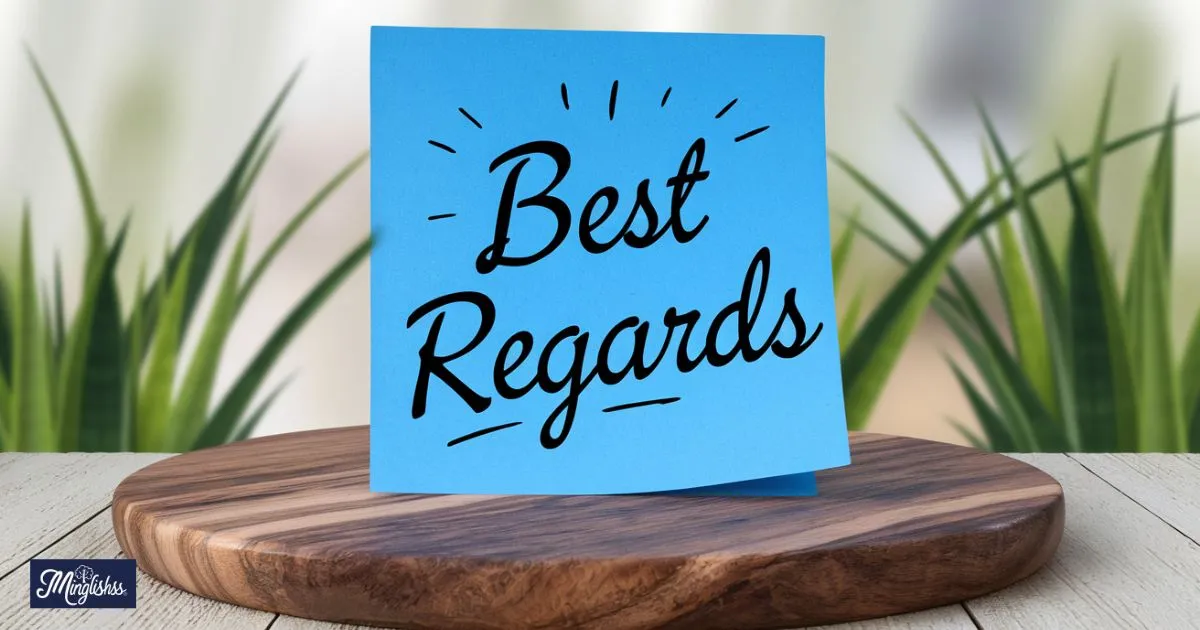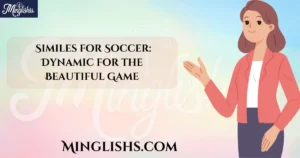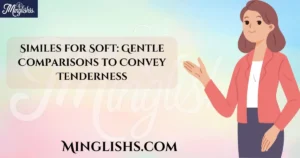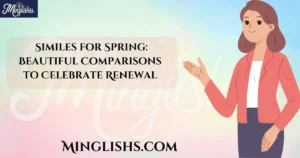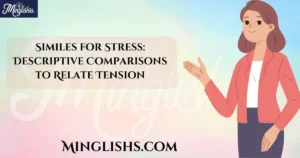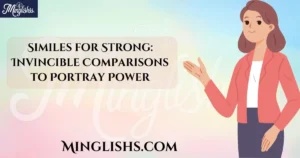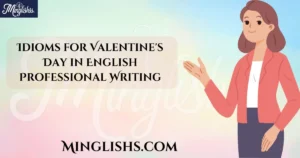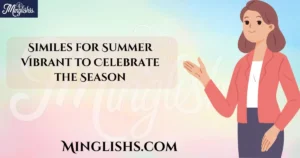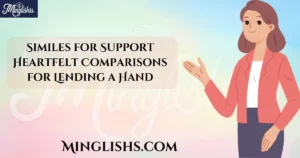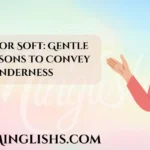“A thoughtful closing can leave a lasting impression and strengthen your connections.”
When communicating, whether through email, letters, or messages, how you conclude your correspondence is just as important as how you begin.
A well-chosen closing phrase can convey your tone and sentiment, making your message feel more personal and engaging. While “Best Regards” is a common way to sign off, exploring alternative phrases can enhance your communication and make it more memorable.
In this post, we will explore 35 other ways to say “Best Regards.” Each phrase will be accompanied by a relevant scenario, an explanation of its use, and additional tips to help you choose the right closing for any situation. By the end, you’ll have a rich vocabulary of sign-offs that can add a unique touch to your correspondence.
Let’s delve into these alternatives and discover how to leave a lasting impression in your communications!
1. Kind Regards
Scenario: Following up with a colleague on a project.
Explanation: This phrase is warm yet professional, making it suitable for most situations.
Additional Tip: Use it in emails where you want to maintain a friendly tone.
2. Warm Regards
Scenario: Sending a thank-you email to a friend or colleague.
Explanation: This closing conveys a sense of warmth and friendliness.
Additional Tip: Great for more casual or personal correspondence.
3. Sincerely
Scenario: Writing a formal letter to a business partner.
Explanation: A classic closing that indicates sincerity and respect.
Additional Tip: Ideal for formal communication where professionalism is key.
4. Yours Truly
Scenario: Signing off a cover letter or formal request.
Explanation: A respectful and traditional way to close a letter.
Additional Tip: Best used in formal contexts or when writing to someone you don’t know well.
5. Best Wishes
Scenario: Sending well-wishes to a colleague on a new job.
Explanation: A friendly, supportive closing that expresses goodwill.
Additional Tip: Perfect for casual or semi-formal communications.
6. Regards
Scenario: Emailing a team member about a project update.
Explanation: A straightforward and neutral closing that works in most situations.
Additional Tip: Use this when you want to keep it simple and professional.
7. With Appreciation
Scenario: Thanking someone for their assistance.
Explanation: Shows gratitude and acknowledges their help.
Additional Tip: Use this in emails where you want to express thanks.
8. Respectfully
Scenario: Communicating with a superior or authority figure.
Explanation: Conveys respect and professionalism.
Additional Tip: Use this in formal emails to show deference.
9. Cheers
Scenario: A casual message to a friend or close colleague.
Explanation: A friendly, informal closing that expresses good vibes.
Additional Tip: Great for casual conversations but avoid in formal contexts.
10. Thank You
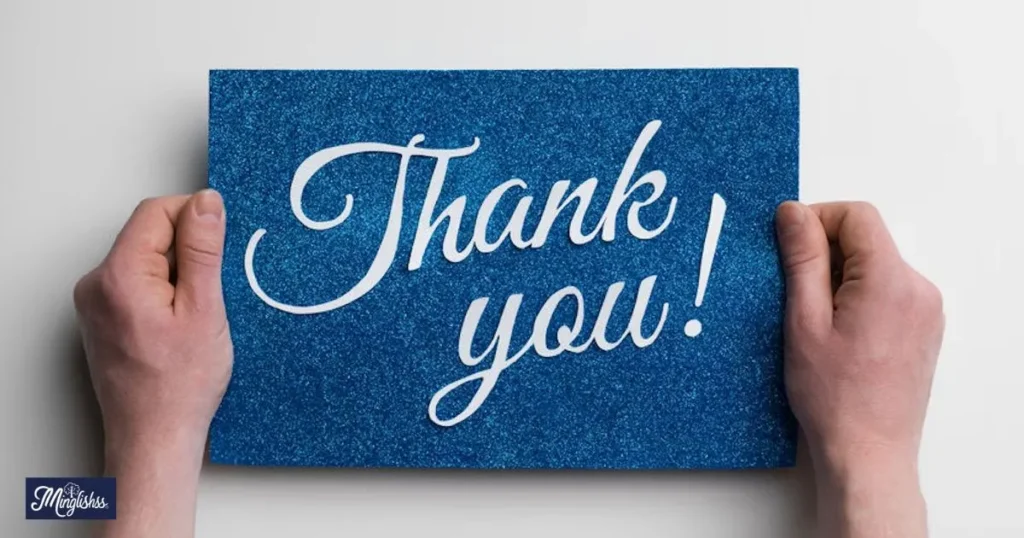
Scenario: After receiving assistance or information.
Explanation: Directly expresses gratitude.
Additional Tip: Ideal for emails that involve appreciation.
11. Take Care
Scenario: Wrapping up a personal message to a friend.
Explanation: A caring, friendly closing.
Additional Tip: Use this in informal correspondence to convey warmth.
12. Yours Faithfully
Scenario: Writing a formal letter when the recipient’s name is unknown.
Explanation: Indicates that you are writing respectfully and formally.
Additional Tip: Suitable for job applications and formal letters.
13. With Gratitude
Scenario: Acknowledging someone’s help on a project.
Explanation: Conveys appreciation and thanks.
Additional Tip: Works well in both formal and informal settings.
14. Cordially
Scenario: A formal email to a new contact.
Explanation: A polite closing that maintains professionalism.
Additional Tip: Ideal for introductory emails.
15. Until Next Time
Scenario: Signing off after a friendly conversation.
Explanation: Implies anticipation for future communication.
Additional Tip: Use this in casual or personal exchanges.
16. Best Regards and Wishes
Scenario: Sending a farewell email to a colleague moving away.
Explanation: Combines good wishes with professionalism.
Additional Tip: Great for expressing well-wishes in professional contexts.
Other Ways to Say “Pros and Cons”
17. Stay Safe
Scenario: Ending a message during uncertain times.
Explanation: A caring closing that expresses concern for the recipient’s well-being.
Additional Tip: Use this in personal or semi-formal messages.
18. Warmly
Scenario: A follow-up message to a friend.
Explanation: A friendly, personal closing that conveys warmth.
Additional Tip: Ideal for casual correspondence.
19. All the Best
Scenario: Sending well-wishes after a meeting.
Explanation: Expresses goodwill and positivity.
Additional Tip: Works well in both professional and personal contexts.
20. With Best Regards
Scenario: A formal email to a client.
Explanation: A slight variation that adds formality to the closing.
Additional Tip: Use this when you want to maintain professionalism.
21. Keep in Touch
Scenario: After a networking event.
Explanation: Encourages continued communication.
Additional Tip: Perfect for maintaining connections.
22. Until We Meet Again
Scenario: Closing a message after a friendly visit.
Explanation: Conveys a sense of anticipation for future interactions.
Additional Tip: Great for informal exchanges.
23. Best of Luck
Scenario: Wishing someone well before a big event.
Explanation: Encourages and supports the recipient.
Additional Tip: Ideal for casual or friendly correspondence.
24. Looking Forward
Scenario: After discussing future plans.
Explanation: Expresses eagerness for upcoming interactions.
Additional Tip: Use this in both formal and informal settings.
25. Take It Easy
Scenario: A casual sign-off to a friend.
Explanation: Conveys a relaxed tone.
Additional Tip: Best for informal conversations.
26. Your Friend

Scenario: Ending a message to a close friend.
Explanation: Indicates a friendly relationship.
Additional Tip: Use this for personal correspondence.
27. Wishing You Well
Scenario: After discussing someone’s challenges.
Explanation: Shows support and goodwill.
Additional Tip: Ideal for empathetic messages.
28. Yours in Service
Scenario: Closing a customer service email.
Explanation: Conveys dedication and support.
Additional Tip: Use this in professional or customer service contexts.
29. With Warm Wishes
Scenario: Sending holiday greetings.
Explanation: A friendly, positive closing.
Additional Tip: Perfect for seasonal messages.
30. In Solidarity
Scenario: Ending a message of support during difficult times.
Explanation: Shows empathy and connection.
Additional Tip: Use this for messages of encouragement.
31. Yours Always
Scenario: Closing a message to a long-time friend.
Explanation: Indicates a strong, lasting connection.
Additional Tip: Ideal for deep, personal correspondence.
32. Take Good Care
Scenario: A friendly closing after checking in.
Explanation: Conveys care and concern.
Additional Tip: Works well in personal messages.
33. Peace and Best Wishes
Scenario: A casual message to a friend.
Explanation: Combines well-wishing with a sense of peace.
Additional Tip: Great for informal exchanges.
34. Until Then
Scenario: After making plans for the future.
Explanation: Indicates anticipation for the next interaction.
Additional Tip: Use this to express eagerness.
35. Yours Truly and Respectfully
Scenario: A formal email to an authority figure.
Explanation: Conveys both sincerity and respect.
Additional Tip: Best for formal correspondence.
Pros and Cons of Using Alternative Closings
Pros
- Enhances personal connection and rapport.
- Allows for customization based on the relationship and context.
- Can convey emotions or sentiments more effectively.
Cons
- Some phrases may not fit all contexts and could feel out of place.
- Overusing casual phrases in formal settings may undermine professionalism.
Conclusion
Exploring various ways to say “Best Regards” can significantly enhance your communication style. By using these 35 alternatives, you can tailor your sign-offs to fit different contexts and relationships, leaving a lasting impression on your recipients.
Remember, the right closing can strengthen connections and convey the right message, so choose wisely and express yourself authentically!

Hi, I’m Lauren Reynolds: I bring creativity to English lessons, mixing fun with learning. My goal is to inspire students to explore and enjoy the language.
